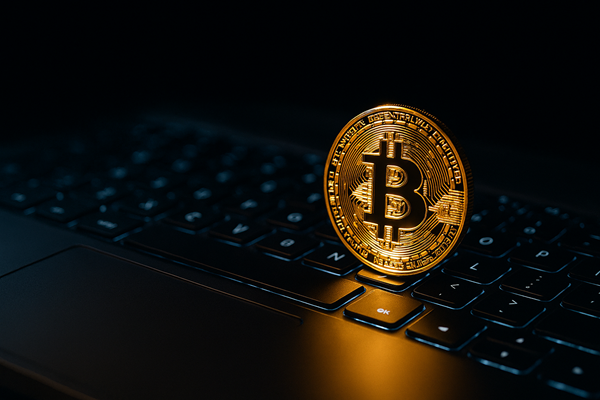Ten years ago, most financial advisors dismissed Bitcoin as internet play money. Now they’re helping clients buy it for retirement accounts. Everything changed when the SEC said yes to Bitcoin ETFs on January 10, 2024. Crypto became as easy to buy as any stock. The question changed from “what is this internet money” to “how much should I invest.”
Skeptics matter just as much as believers in this story. When grandparents argue about Bitcoin at Sunday dinner, that argument itself shows how deep crypto has penetrated society. We went from ignoring digital assets to fighting about them. That fight means crypto now belongs to the same category as taxes, healthcare, and other topics that entire societies debate together.
The gambling industry has also adapted to these changing expectations around digital money. Players increasingly expect fast, borderless transactions when engaging with online entertainment platforms, and the best crypto casinos facilitate this. Elsewhere, using crypto allows for faster international payments and remittances. This reduces the need for costly currency conversions and long processing times, making sending money to family abroad easier than ever before.
Money Becomes Programmable Software
Blockchain technology popularized the concept that money can be programmable, with rules enforced by code rather than just institutions. This expectation change is cultural in nature. People increasingly assume payments should be instantaneous, auditable, and able to interact with other software applications. Even when public blockchains are not used directly, they have raised the bar for what users expect from digital finance systems.
Central bank researchers now treat tokenization as a serious architectural change for the financial system. This could fundamentally rewire how assets are issued, settled, and moved across borders. The cultural shift means people expect money to behave more like internet-native objects that move at web speed, globally.
Dollar-pegged stablecoins became the bridge most people use to enter crypto. Numbers tell the story clearly: by mid-2025, these tokens captured 99% of the stablecoin market. The total value hit $250 billion. People aren’t buying stablecoins to get rich quick. They want dollar-denominated digital cash that works anywhere.
Families sending money across borders discovered something powerful. Stablecoins let them move dollars faster and cheaper than traditional banks. A construction worker in Texas can send money to his mother in El Salvador within minutes, not days. Small savings on fees matter when you send money every month. This isn’t about trading or speculation. It’s about taking care of family.
New Coordination Rituals in Digital Spaces
DAOs changed how strangers work together online. Before crypto, you needed corporations, nonprofits, or platforms to coordinate group projects. Now communities can pool money, vote on decisions, and execute plans through smart contracts. The corporate boardroom moved to public blockchains where anyone can watch and participate.
Recent data shows 15-20% of people vote in most DAO decisions. That jumps higher when important proposals come up. These numbers create a new language for digital democracy: someone writes a proposal, the community debates it, members vote, and code executes the results. No CEO or moderator controls the outcome.
This has created new frameworks for coordination. Off-chain voting reduces costs and friction, while experimental mechanisms address entrenched power structures. The cultural impact is that digital communities can now function with shared resources and democratic decision-making processes that exist outside traditional institutional frameworks.
Wallets as Digital Identity Passports
Crypto wallets have evolved beyond payment tools into portable profiles that can prove participation history. Your wallet can show you were early to a project, donated to a cause, or contributed to a community initiative. This on-chain trail, which is opt-in and pseudonymous, turns participation into durable credentials.
Communities now form around “wallet publics,” where belonging is demonstrated through cryptographic proofs rather than platform-specific usernames. As more applications authenticate through wallets, users expect their reputation to be portable across platforms. This could loosen dependence on closed social networks that trap user identity and social connections.
The shift toward wallet-based identity represents a move away from platform-controlled profiles toward user-controlled digital presence that can travel across different applications and services.
Creator Economy Gets Rewired
NFTs crashed from their 2021 highs, but they taught everyone two lessons. First, people will pay crazy money for digital status symbols. Second, programmable ownership sticks around after the hype dies. Big companies learned this and kept building.
Today, concert venues sell NFT tickets that unlock backstage access. Fashion brands create digital clothes that work in multiple games. Sports teams give NFT holders special parking spots and player meet-ups. Fans don’t just buy merchandise anymore. They buy membership that comes with perks, voting rights, and resale value.
This represents a shift from passive consumption to participatory creation, where fans become stakeholders in the creative process through tokenized ownership and governance mechanisms.
Regulation as Cultural Infrastructure
Rules don’t just stop bad behavior. They teach people what normal looks like. Europe finished rolling out its crypto rulebook (MiCA) by late 2024. These new laws spell out how stablecoin companies must hold reserves, what disclosures they must make, and which licenses they need.
The rulebook becomes culture. When governments say “this is acceptable and this isn’t,” businesses and users learn what society expects. American policymakers now argue about whether European stablecoins should get the same treatment as domestic ones. This debate shows crypto stopped being just technology. It became national economic policy.
The regulatory response reflects broader social negotiations about money, sovereignty, and financial infrastructure rather than purely technical considerations.
Global Participation Beyond Platforms
Perhaps the most significant cultural shift is that crypto makes global participation feel native. Whether you’re in Lagos, Buenos Aires, or Berlin, you can hold the same dollar-stablecoin, participate in the same DAO, and support the same creators without requiring platform permission or traditional banking relationships.
Where social networks trapped identity inside walled gardens, crypto’s open infrastructure promotes portable belonging. People increasingly expect their assets, credentials, and communities to travel with them across applications and borders.
This expectation extends beyond financial transactions to social and professional relationships. Digital identity, reputation, and participation are becoming decoupled from specific platforms or geographical locations.
New Labor and Incentive Models
Airdrops, bounties, and on-chain grants have transformed online participation into earning opportunities. This changes how people think about digital work, moving from posting for likes to building for governance tokens. DAOs distribute funds for public goods, protocols reward testers and translators, and creators share revenue with collectors who help market their releases.
The boundaries between user, investor, and contributor blur, along with traditional norms around loyalty, attribution, and merit in digital communities. Participation itself becomes a form of labor that can generate economic value.
The Quiet Revolution Continues
Crypto’s biggest victory wasn’t the price charts or the headlines. It was changing how people think about money, community, and digital ownership. We now expect money to work like software, believe strangers can coordinate through code instead of companies, and assume our digital stuff should belong to us, not the platforms. Banks are building stablecoin services because customers demand them. Game developers add NFT features because players want portable assets.
This shift will outlast any individual cryptocurrency or company. People experienced what programmable money feels like and participated in communities they actually owned. You can’t undo that knowledge. The next generation will build on these expectations, creating digital spaces we can barely imagine today.


